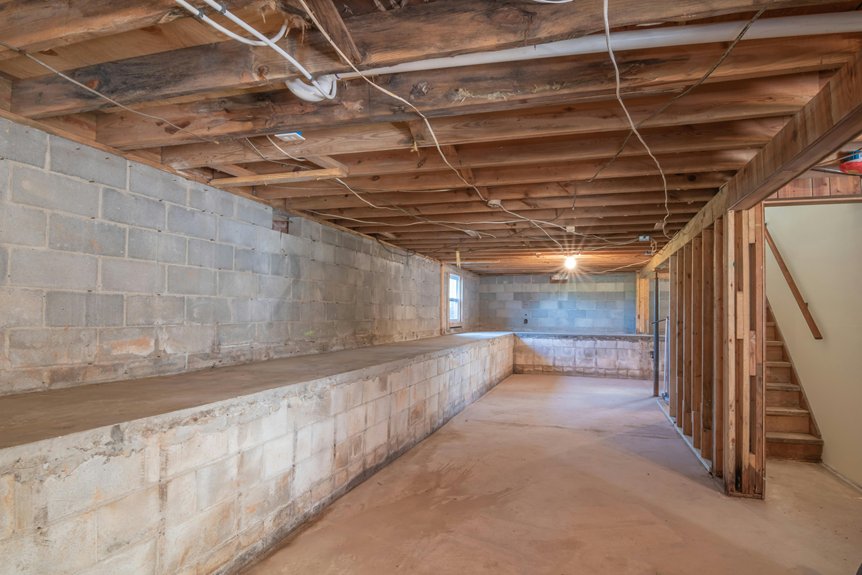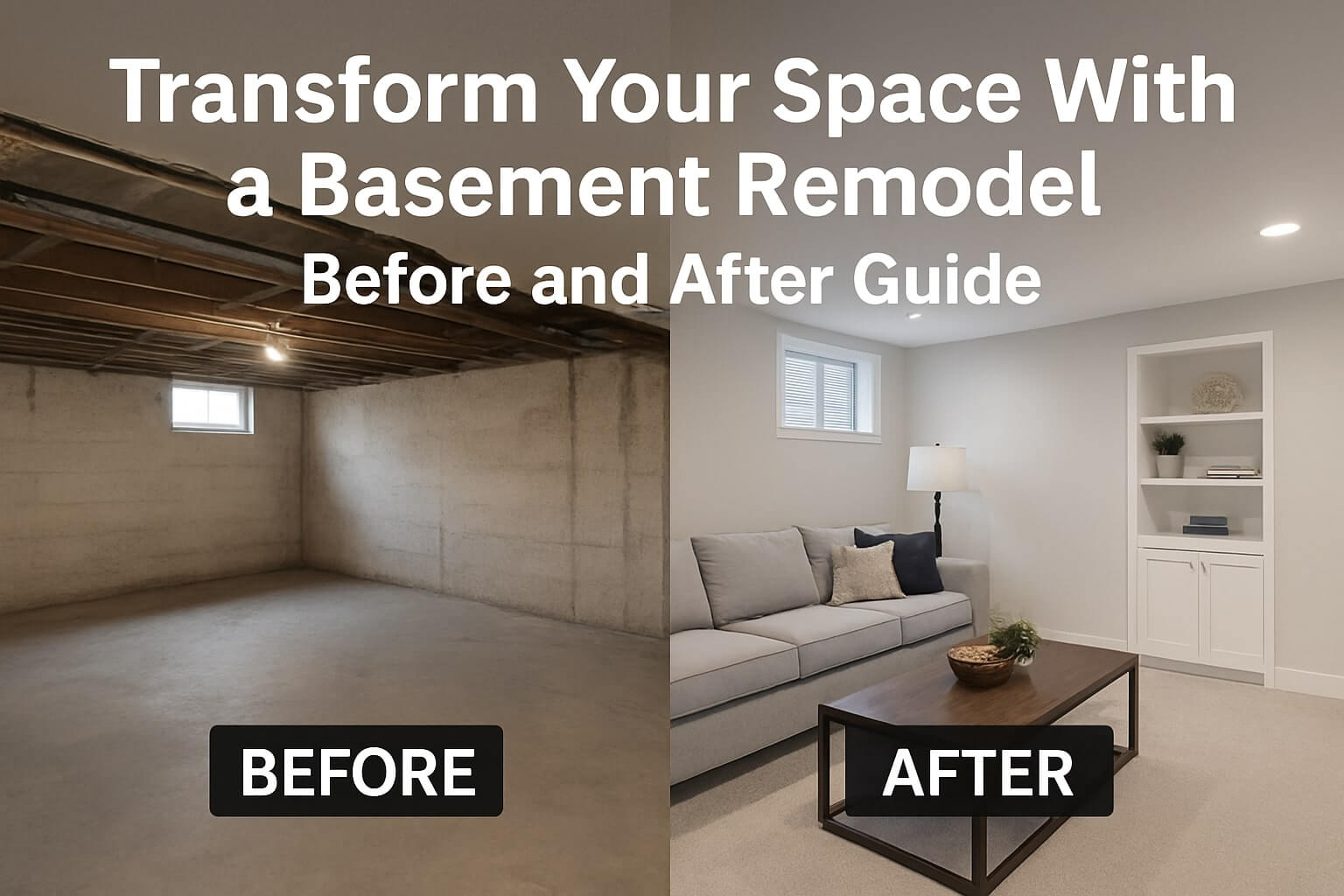When you’re considering remodeling your old basement, it’s essential to prioritize a few key aspects. First, you need to assess the structural integrity to avoid potential issues down the line. Next, think about how to design the space for both functionality and style, ensuring it meets your needs. Finally, don’t overlook moisture management, which can greatly impact your renovation. Understanding these elements will set the foundation for a successful project. What comes next might surprise you.
Key Takeaways
- Conduct a thorough inspection for structural integrity, checking for cracks, water damage, and signs of mold or mildew.
- Design with functionality in mind, utilizing multipurpose furniture and strategic layouts for optimized space.
- Install moisture barriers and select appropriate insulation to manage humidity and enhance thermal performance.
- Consult professionals for assessments, design integrations, and ensuring compliance with building codes.
- Choose durable materials and plan for long-term needs to improve space usability and home value.
Assessing Structural Integrity

Before diving into your basement remodeling project, it’s vital to assess its structural integrity.
Start with a thorough foundation inspection to guarantee there are no cracks or water damage. Look for signs of mold or mildew, which can indicate moisture issues.
Begin with a comprehensive foundation inspection to check for cracks, water damage, and signs of mold or mildew.
Next, identify load bearing walls; these are essential for supporting the home’s structure. Avoid compromising them during your remodel.
If you’re unsure about any findings, consult a professional to evaluate the basement’s condition.
Addressing structural concerns first will save you time and money down the line, assuring a safe and successful remodeling experience.
Designing for Functionality and Style

While you might be enthusiastic to start your basement remodel, it’s essential to balance functionality and style to create a space that meets your needs and reflects your personal taste. Focus on space optimization by choosing multipurpose furniture and strategic layouts. Consider aesthetic choices like color schemes and materials that resonate with your vision.
| Functionality | Style |
|---|---|
| Multipurpose seating | Modern color palette |
| Built-in storage | Rustic accents |
| Flexible layouts | Decorative lighting |
| Durable flooring | Textured finishes |
Combining these elements guarantees a cohesive and practical basement design.
Planning for Moisture and Insulation

As you commence your basement remodel, planning for moisture and insulation is essential to guarantee a comfortable and lasting space.
Start by choosing the right moisture barriers to prevent water damage. Next, consider various insulation types that suit your climate and space needs.
Here are three key steps:
- Install a vapor barrier on walls and floors to block moisture.
- Select insulation types like fiberglass or foam board for ideal thermal performance.
- Ensure proper ventilation to reduce humidity levels.
Conclusion
To sum up, remodeling your old basement can transform it into a valuable living space when you prioritize structural integrity, functionality, and moisture management. By inspecting for any issues, using multipurpose furniture, and ensuring proper insulation and ventilation, you’ll create a comfortable and stylish environment. Don’t hesitate to consult professionals for guidance, and invest in durable materials to enhance longevity. With these essential tips, your remodeled basement will not only meet your needs but also boost your home’s overall value.



